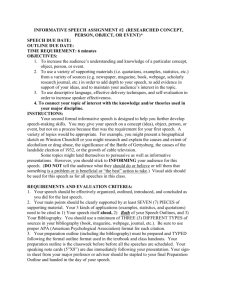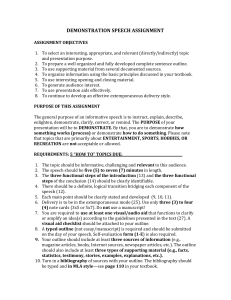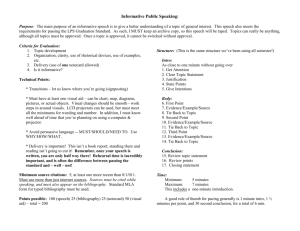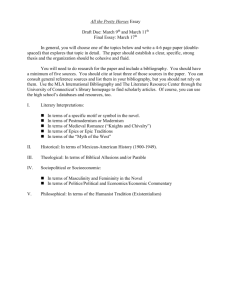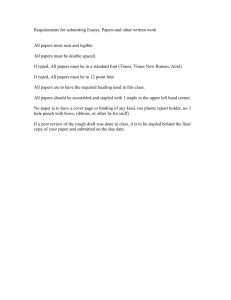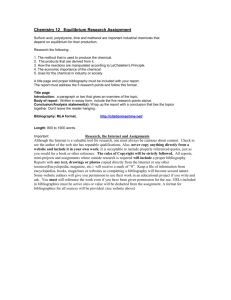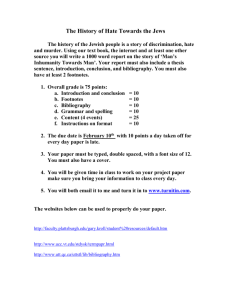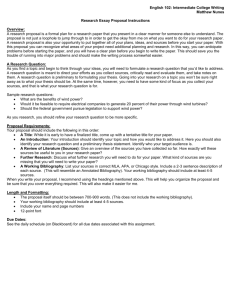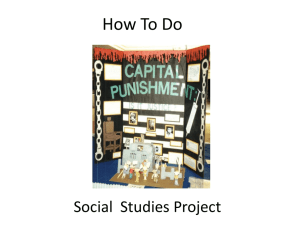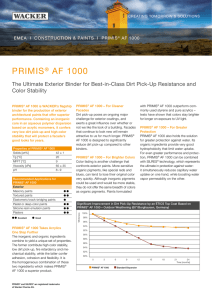INFORMATIVE SPEECH ASSIGNMENT #2 (RESEARCHED
advertisement
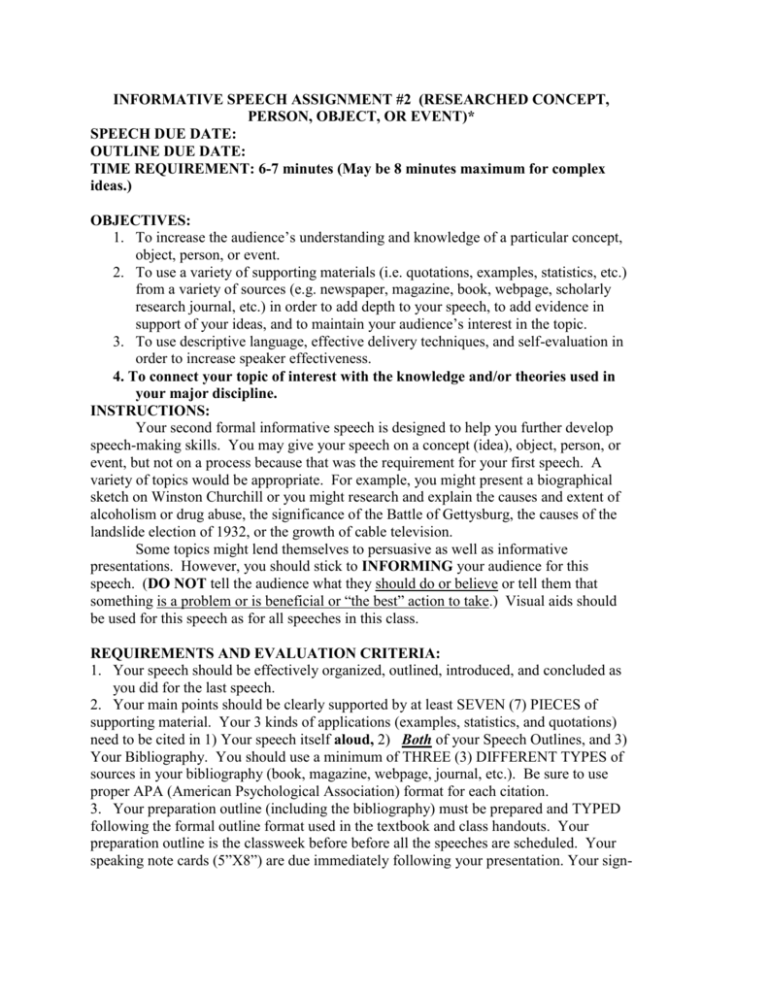
INFORMATIVE SPEECH ASSIGNMENT #2 (RESEARCHED CONCEPT, PERSON, OBJECT, OR EVENT)* SPEECH DUE DATE: OUTLINE DUE DATE: TIME REQUIREMENT: 6-7 minutes (May be 8 minutes maximum for complex ideas.) OBJECTIVES: 1. To increase the audience’s understanding and knowledge of a particular concept, object, person, or event. 2. To use a variety of supporting materials (i.e. quotations, examples, statistics, etc.) from a variety of sources (e.g. newspaper, magazine, book, webpage, scholarly research journal, etc.) in order to add depth to your speech, to add evidence in support of your ideas, and to maintain your audience’s interest in the topic. 3. To use descriptive language, effective delivery techniques, and self-evaluation in order to increase speaker effectiveness. 4. To connect your topic of interest with the knowledge and/or theories used in your major discipline. INSTRUCTIONS: Your second formal informative speech is designed to help you further develop speech-making skills. You may give your speech on a concept (idea), object, person, or event, but not on a process because that was the requirement for your first speech. A variety of topics would be appropriate. For example, you might present a biographical sketch on Winston Churchill or you might research and explain the causes and extent of alcoholism or drug abuse, the significance of the Battle of Gettysburg, the causes of the landslide election of 1932, or the growth of cable television. Some topics might lend themselves to persuasive as well as informative presentations. However, you should stick to INFORMING your audience for this speech. (DO NOT tell the audience what they should do or believe or tell them that something is a problem or is beneficial or “the best” action to take.) Visual aids should be used for this speech as for all speeches in this class. REQUIREMENTS AND EVALUATION CRITERIA: 1. Your speech should be effectively organized, outlined, introduced, and concluded as you did for the last speech. 2. Your main points should be clearly supported by at least SEVEN (7) PIECES of supporting material. Your 3 kinds of applications (examples, statistics, and quotations) need to be cited in 1) Your speech itself aloud, 2) Both of your Speech Outlines, and 3) Your Bibliography. You should use a minimum of THREE (3) DIFFERENT TYPES of sources in your bibliography (book, magazine, webpage, journal, etc.). Be sure to use proper APA (American Psychological Association) format for each citation. 3. Your preparation outline (including the bibliography) must be prepared and TYPED following the formal outline format used in the textbook and class handouts. Your preparation outline is the classweek before before all the speeches are scheduled. Your speaking note cards (5”X8”) are due immediately following your presentation. Your sign- in sheet from your major professor or advisor should be stapled to your final Preparation Outline and handed in the day of your speech. 4. Your speech must be delivered extemporaneously from notes. Do NOT prepare a speech manuscript; do NOT memorize a manuscript; do NOT read points word-for-word. I advise limiting yourself to 3-5 note cards for your speaking notes. Practice your speech several times using cards BEFORE the day of your presentation. Be sure top list your citations on your cards so you remember to say them! (You may read the citations wordfor-word.) 5. On the day of your presentation, bring your video cassette VHS tape, labeled with your name, to class. After your speech, pick up your cassette and do a self-evaluation of your presentation. Your self-evaluation is due one week after your speech. 6. Evaluation criteria include: Introduction, Organization & Use of Transitions, Content Development, Use of Supporting Material and Visual Aids, Use of Language, Conclusion, Delivery, and Overall: Time limit, Audience-Centeredness, Oulines. Speech #2 Checklist of Items Due Typed Preparation Outline Following ORGANIZATIONAL PATTERNS Given Out in Class. Typed Bibliography: Can be Contiguous With Your Outline Sign up sheet: Stapled behind Bibliography Speaking Cards *Adapted from Dwyer, K.D. (2002). Public Speaking Workbook, 7th Edition. Boston: McGraw-Hill Primis Custom. Name:____________________________________________________ ANALYZING & USING SUPPORTING MATERIAL OBJECTIVE: INSTRUCTIONS: TYPES OF SUPPORTING MATERIAL 1. EXAMPLES: a. Brief Source: b. Extended Source: c. Hypothetical Source: 2. STATISTICS a. Numbers or Percentages Source: b. Dates Source: 3. TESTIMONY (quotations or paraphrase): a. Peer Source: b. Expert Source: *Adapted from Dwyer, K.D. (2002). Public Speaking Workbook, 7th Edition. Boston: McGraw-Hill Primis Custom.
